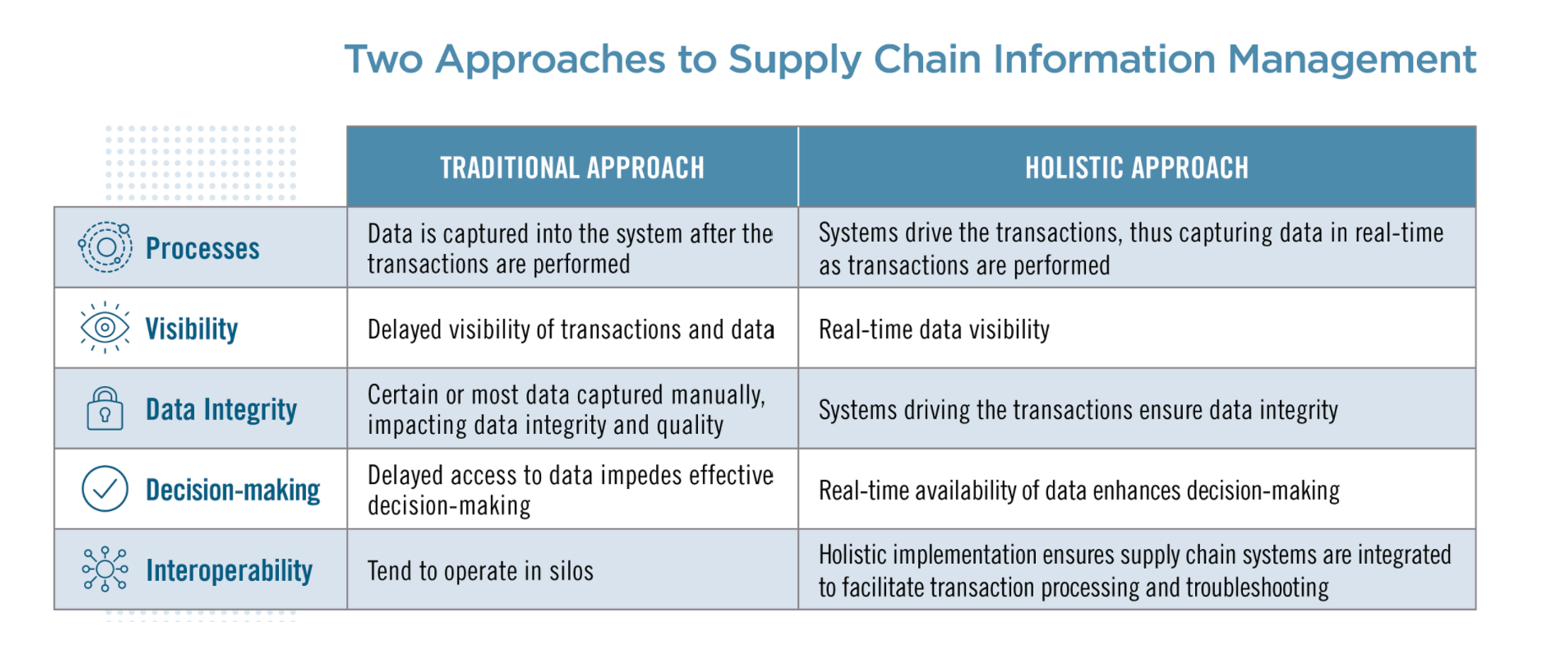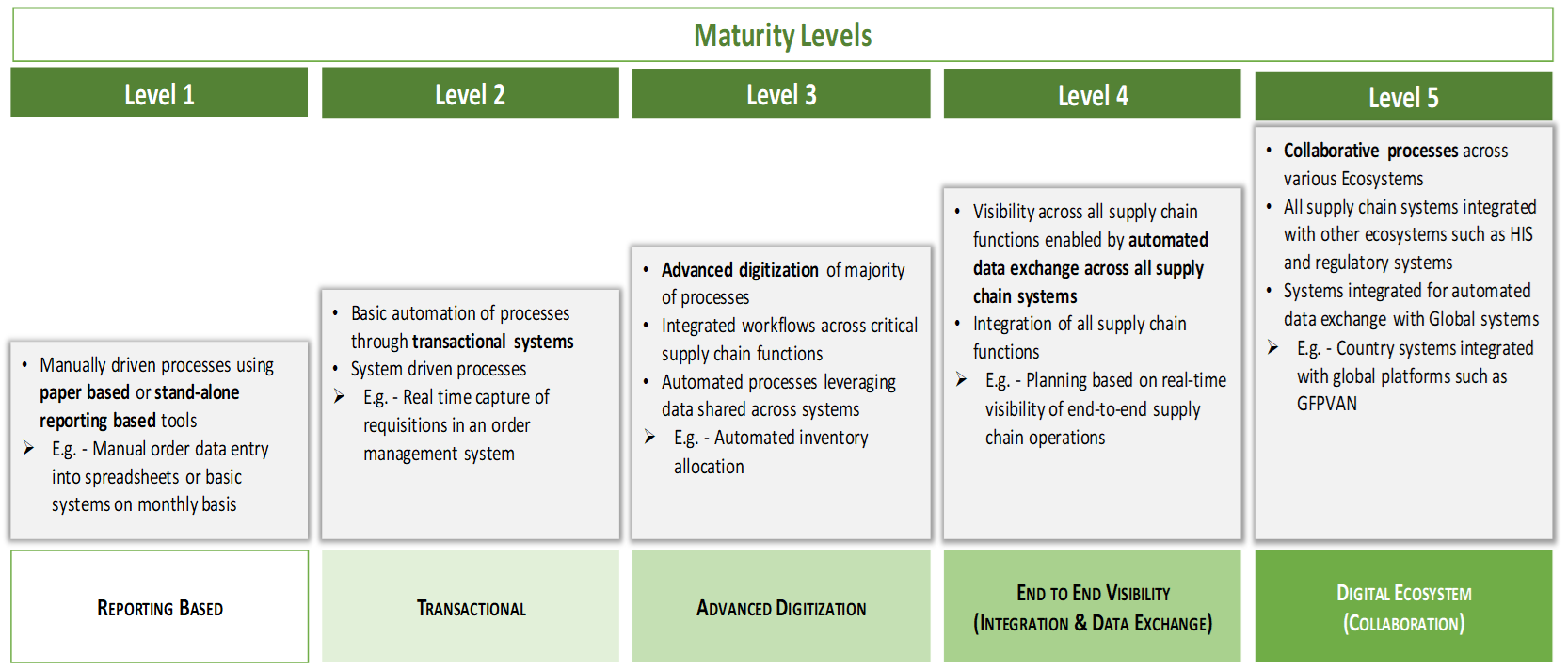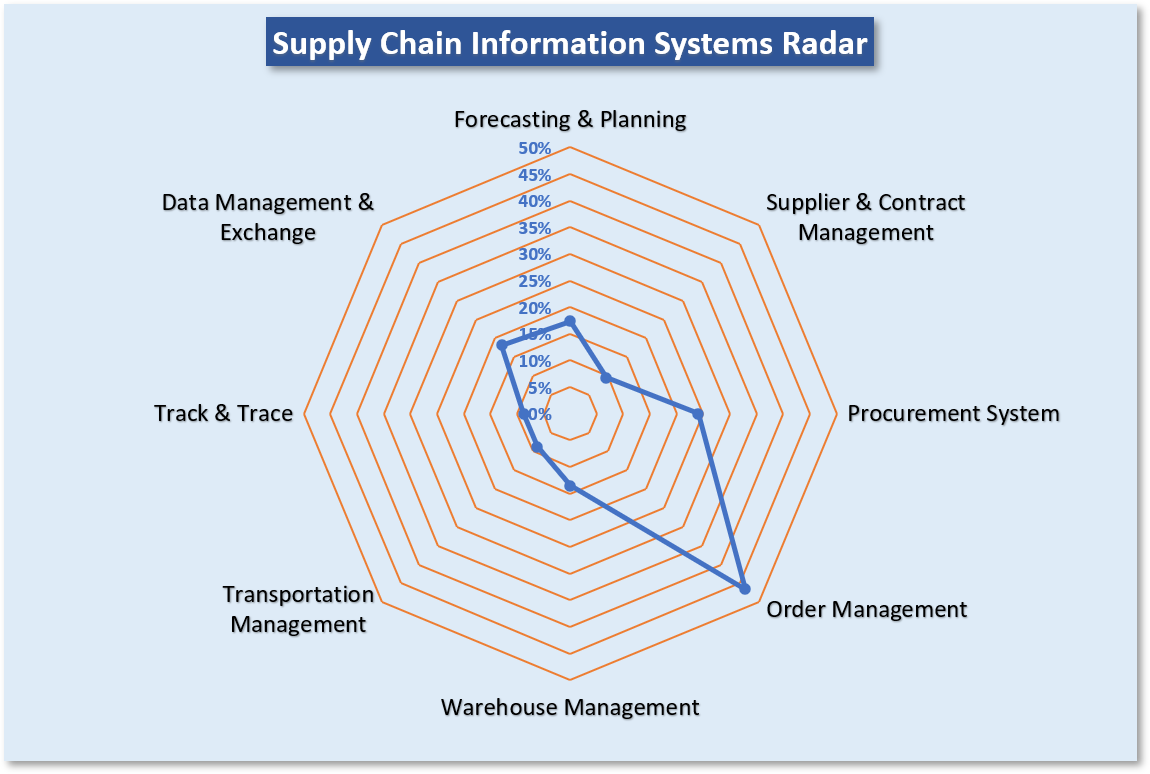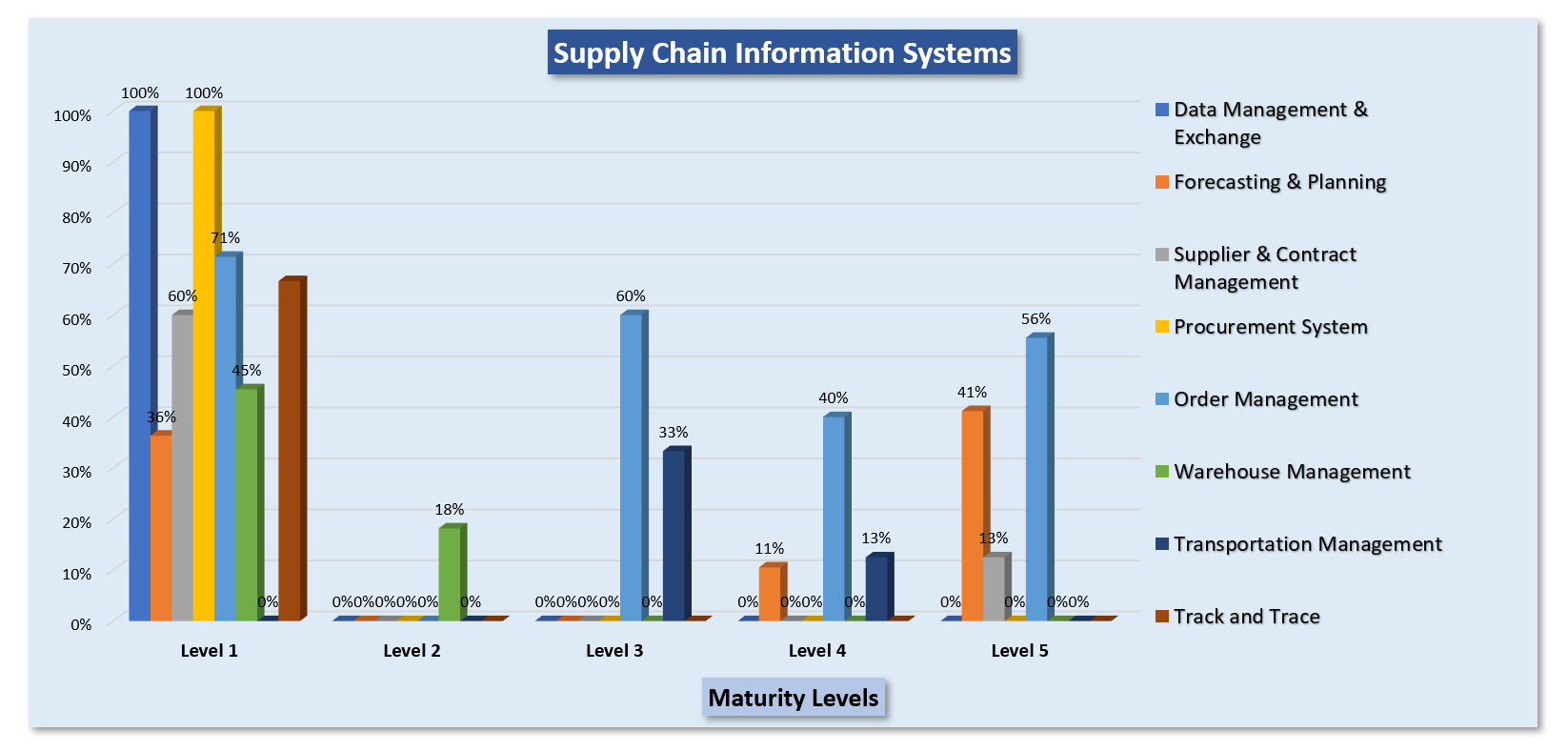National healthcare Information Systems form the backbone of well-coordinated National Healthcare Supply Chains. They are instrumental in facilitating consistent coordination across the entire supply chain, by providing end-to-end visibility, agility, and, more importantly, ensuring patient safety.
A holistic approach results in more effective systems, enabling managers to maintain visibility along the entire supply chain. This allows them to be more proactive, and to better anticipate to changing needs, therefore reducing waste and containing costs. Lastly, enhanced traceability translates into patients increased access to high-quality, authenticity-verified commodities, contributing to better national health outcomes.



